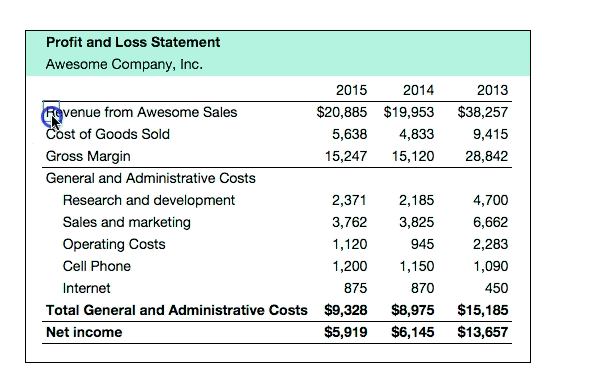There are so many acronyms used in the accounting world today. Even with formal training, it can be difficult to recall them all.
SG&A and P&L are two common acronyms fundamental to understanding a business’s finances. In a product-based manufacturing or drop shipping setting, these two terms go hand in hand with managing your cash flow and setting your business up for success.
Your organization may need to understand how these two terms are related, report on them regularly, and get ahead of the challenges that may result if calculations show the company is tracking favorably against projections.
What Is SG&A?
Direct costs, which are associated with a company’s core business, are always under observation. They are highly controlled and constantly analyzed since they directly impact the product or service.
Indirect costs, when not managed, can be like transferring feathers in an open truck bed. Your money is constantly blowing away little by little without ever noticing. The worst-case scenario could mean a lack of return for your company.
Selling, General & Administrative (SG&A) expenses are the costs a company incurs to promote, sell, and deliver its products and services and expenses involved in managing the entire company. These expenses differ from COGS, but you won’t necessarily see them in a service-based organization.
Also known as operating expenses, SG&A is the overhead required to support operations. These expenses include rent, advertising and marketing, administrative costs, sales commissions, and utilities.
Profit & Loss
Operating expenses do not include the direct costs of producing goods or acquiring goods for sale, which are calculated separately as cost of goods sold or COGS, aka P&L (profit and loss).

A P&L statement shows how much revenue a business generates, the cost incurred to create this revenue, and the other expenses necessary for the business’s operations.
COGS represents how much it costs to produce a product or service. Examples include direct expenses such as raw materials, direct labor, and shipping costs. These expenses are recorded in the profit and loss statement that summarizes the revenues, fees, and overhead incurred during a specific period.
Operating expenses are very important, but the individuals within these departments are not directly involved in making the final product or service. Therefore, these operating expenses are not directly what the customers are purchasing.
Calculations
To calculate SG&A, use the formula below to add together selling expenses and general & administrative expenses.

SG&A costs are typically the second expense category recorded on an income statement after COGS.
Also found in the financial statements is the ratio of SG&A expenses to sales revenue. This calculation is another way of understanding the financial health of a business.

The SG&A sales ratio gives an organization a big picture of its business expenses compared to the money coming in. If this ratio increases over time, it may be more challenging to earn a growing profit.
Challenges
Overall, operating expenses should be stable year to year, or in a growing business, they should be declining. If this number increases, it sends up a big red flag to lenders, creditors, and potential investors. This number evaluates how companies effectively utilize their cash.
When operating expenses grow too large without a corresponding rise in sales, businesses need to start cutting costs. Cutting out non-sales salaries can usually be done without impeding manufacturing, which is often why company layoffs can increase overall profitability.
After defining the need to reduce SG&A expenses, there should be an assessment of the company’s main accounts. It is important to scrutinize each account and prioritize the areas with the greatest reduction potential.
Additionally, monitoring the administrative areas, replacing suppliers, and renegotiating contracts can impact your organization’s profit over time.
Final Thoughts
It isn’t always apparent whether your business is losing or earning money. Sometimes, you may receive large bundles of capital at once, and it can feel like your business is prospering. Only to find out later that your business is in a cash-flow deficit.
Monitoring and understanding your SG&A within a product-based setting, in addition to COGS, is vital because it affects your bottom line. In conjunction with adopting more efficient budget management, reducing these expenses can boost an organization’s financial results.
How FINSYNC Can Help
FINSYNC allows you to run your business on One Platform. You can send and receive payments, process payroll, automate accounting, and manage cash flow. To learn more about how we can help your business start, scale, and succeed, contact us today.
